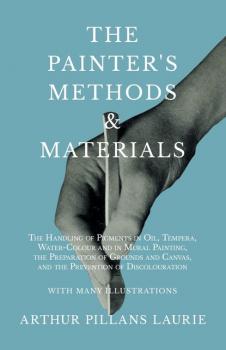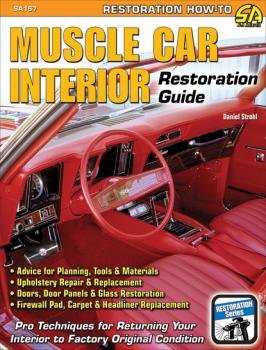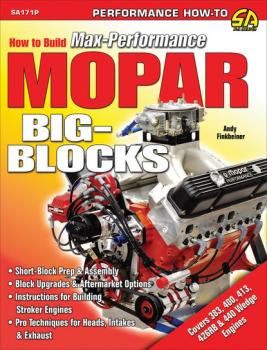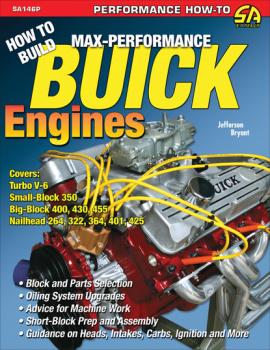Сделай Сам
Различные книги в жанре Сделай СамFirst Steps In Dressmaking - Essential Stitches And Seams, Easy Garment Making, Individualizing Tissue-Paper Patterns
Many of the earliest books, particularly those dating back to the 1900s and before, are now extremely scarce and increasingly expensive. We are republishing these classic works in affordable, high quality, modern editions, using the original text and artwork.
Practical Staircase Joinery - With Numerous Engravings and Diagrams
First published in first published in 1899, this book contains a classic guide to making a variety of different types of staircases for the home. The information contained within it was sourced from columns in the weekly journal “Building World”, having been consolidated into this concise handbook by the author. “Practical Staircase Joinery” is perfect for DIY enthusiasts and novice joiners alike. Contents include: “Introduction: Explanation of Terms”, “Simple Form of Staircase—Housed String Stair Measuring, Planning and Setting Out”, “Two-Flight Staircase”, “Staircase with Winders at Bottom”, “Staircase over an Oblique Plan”, “Geometrical Staircases”, etc. Paul Nooncree Hasluck (1854 – 1916) was an Australian writer and editor. He was a master of technical writing and father of the 'do-it-yourself' book, producing many works on subjects including engineering, handicrafts, woodwork, and more. Other notable works by this author include: “Treatise on the Tools Employed in the Art of Turning” (1881), “The Wrath-Jobber's Handy Book” (1887), and “Screw-Threads and Methods of Producing Them” (1887). Many vintage books such as this are increasingly scarce and expensive. It is with this in mind that we are republishing this volume now in an affordable, modern, high-quality edition complete with a specially-commissioned new biography of the author.
The Painter's Methods and Materials
“The Painter's Method and Materials” is a comprehensive guide to all things painting, dealing with everything from how to use use pigments in tempera to water-colour, mural painting, the theories of light and colour, and much more. This timeless volume will prove to be an invaluable resource for painters both new and old, and it would make for a marvellous addition to collections of allied literature. Contents include: “The Mediums Used in Painting”, “The Written Evidence on Early Painting Methods in Oil”, “Wood Panels and Canvas”, “The Pigments Used in Painting (contd.)”, “The Behaviour of White Light”, “Colour and the Prism”, “Linseed Oil, Walnut Oil, and Poppy Oil”, “How to Paint Oil Pictures”, etc. Many vintage books such as this are increasingly scarce and expensive. We are republishing this volume now in an affordable, modern, high-quality edition complete with a specially-commissioned new the original text and artwork.
Cabinetwork and Joinery - Comprising Designs and Details of Construction with 2,021 Working Drawings
First published in 1907, this is a complete guide to joinery with a specific focus on cabinet making. 'Joinery' refers to the wooden components of a building, such as stairs, doors, and door and window frames. Including instructions for designing and practical step-by-step directions, this timeless volume will be of utility to DIY enthusiasts and those with an interest in woodwork in general. Paul Nooncree Hasluck (1854 – 1916) was an Australian engineer and editor. He was a master of technical writing and father of the 'do-it-yourself' book, producing many books on subjects including engineering, handicrafts, woodwork, and more. Other notable works by this author include: “Treatise on the Tools Employed in the Art of Turning” (1881), “The Wrath-Jobber's Handy Book” (1887), and “Screw-Threads and Methods of Producing Them” (1887). Many vintage books such as this are increasingly scarce and expensive. It is with this in mind that we are republishing this volume now in an affordable, modern, high-quality edition complete with a specially-commissioned new biography of the author.
Furniture and Cabinet-Making - With Instructions and Illustrations on Constructing Household Furniture, Including Various Cabinet Designs for Different Uses - The Handyman's Book of Woodworking
This is a classic guide to woodworking that focuses on making a variety of cabinets and similar items of household furniture. Including instructions for designing and practical step-by-step directions, this timeless volume will be of utility to DIY enthusiasts and those with an interest in woodwork in general. Paul Nooncree Hasluck (1854 – 1916) was an Australian engineer and editor. He was a master of technical writing and father of the 'do-it-yourself' book, producing many books on subjects including engineering, handicrafts, woodwork, and more. Other notable works by this author include: “Treatise on the Tools Employed in the Art of Turning” (1881), “The Wrath-Jobber's Handy Book” (1887), and “Screw-Threads and Methods of Producing Them” (1887). Many vintage books such as this are increasingly scarce and expensive. It is with this in mind that we are republishing this volume now in an affordable, modern, high-quality edition complete with a specially-commissioned new biography of the author.
Muscle Car Interior Restoration Guide
The photos in this edition are black and white.<p>A muscle car has not been fully restored until the interior has been returned to original or like-new condition. Whether a car operates in a northern or southern climate, seats, carpets, and other equipment deteriorate and wear out over time. A factory-original and professional-grade interior restoration is critical for enjoying the driving experience. However, many enthusiasts and owners do not fully understand the techniques and procedures necessary to produce a premium-quality or original restoration. <P>While factory service manuals and magazine articles might cover bits and pieces of the interior restoration process, this book has been entirely dedicated to the process of restoring the interior. <I>Muscle Car Interior Restoration</I> provides expert insight into the tools, materials, techniques, and procedures for professionally completing a muscle car restoration. It covers instrument panel and dashboard restoration, electrical system restoration, firewall pad, steering wheel, steering column, and pedal restoration. It also provides insight and expert guidance for restoring carpet, headliners, doors, door panels, glass restoration or replacement, convertible top restoration, upholstery replacement, and vinyl and leather seat repair. <P>With the prices of muscle cars high enough to make Wall Street investors pay attention, a tasteful modified or quality restored interior will mean the difference of thousands – if not tens of thousands of dollars when it comes time to sell. Whether you're looking to cash in with a quality restoration, or just want to make the cockpit of your favorite muscle car a pleasant place to be, this book will help you do the trick.
How to Build Max-Performance Mopar Big Blocks
The photos in this edition are black and white.<p>Starting in the early 1960s, Mopar Wedge engines powered a wide range of Chrysler muscle cars, such as the Dodge Charger, Daytona Charger, Super Bee, Challenger, as well as Plymouth Barracuda, Superbird, Road Runner, GTX, and others. Many times these high-powered muscle cars were pursued by equally high-powered Dodge and Plymouth police cars that were also packing Mopar big-block power under the hood. In 1978, the last of the Mopar big-blocks rolled down the production line, but in an odd twist of fate, the popularity of the Mopar surged again in street and strip cars during the 1980s. By the 1990s, the big Mopar engine was more popular than ever. <p>This book covers how to build Mopar's 383-, 400-, 413-, 426-, and 440-ci engines to power levels of 600 to 900 hp. <i>How to Build Max-Performance Mopar Big Blocks</i> discusses how to properly budget your engine build for a specific performance target and how to select a stock or aftermarket block for the desired performance level. The reciprocating assembly (crankshaft, connecting rods, and pistons) is examined in detail, to help you select the right design and material for durability and performance requirements. Cylinder heads and valvetrain configurations are crucial for generating maximum horsepower and torque. This volume discusses all the stock modification options, the best setups, selecting the right machine work, the latest aftermarket head options for producing huge horsepower, and building stroker engines. The camshafts and lifters chapter compares and contrasts use of hydraulic flat tappet, hydraulic roller, and solid flat tappet cams. In addition, the book explains how to optimize fresh and spent fuel, discussing single- and dual-plane intake manifolds, as well as the exhaust-system design to optimize scavenging. Also details engine builds at 600, 700, 800, and 900 horsepower levels to provide insight and reveal what can be done with real-world component packages.
How to Build Max-Performance Buick Engines
The photos in this edition are black and white.<p>Skylarks, GSXs, Grand Nationals, Rivieras, Gran Sports; the list of formidable performance Buicks is impressive. From the torque monsters of the 1960s to the high-flying Turbo models of the '80s, Buicks have a unique place in performance history. <p>During the 1960s, when word of the mountains of torque supplied by the big-inch Buicks hit the street, nobody wanted to mess with them. Later, big-inch Buicks and the Hemi Chryslers went at it hammer and tongs in stock drag shootouts and in the pages of the popular musclecar magazines of the day. The wars between the Turbo Buicks and Mustang GTs in the 1980s were also legendary, as both cars responded so well to modifications. <p><i>How to Build Max-Performance Buick Engines</i> is the first performance engine book ever published on the Buick family of engines. This book covers everything from the Nailheads of the '50s and early '60s, to the later evolutions of the Buick V-8 through the '60s and '70s, through to the turbo V-6 models of the '70s and '80s. Veteran magazine writer and Buick owner Jefferson Bryant supplies the most up-to-date information on heads, blocks, cams, rotating assemblies, interchangeability, and oiling-system improvements and modifications, along with details on the best performance options available, avenues for aftermarket support, and so much more. Finally, the Buick camp gets the information they have been waiting for, and it's all right here in <i>How to Build Max-Performance Buick Engines</i>.
How to Drift: The Art of Oversteer
The photos in this edition are black and white.<p>Drifting is the newest, most exciting motorsport we have seen in the United States since the invention of the limited slip differential – it may even be the most exhilarating contest man and machine ever devised! <p>From the winding mountain passes and desolate industrial roads of Japan, this unique sport of sliding a car sideways through a series of corners has become a huge hit in America. Drift, or dorifto as they call it Japan, extracts the most exciting portion from various forms of auto racing – the four-wheel drift – and makes it the focus of an extremely intense and visually intoxicating new motor sport. <p><i>How to Drift: The Art of Oversteer</i> is a comprehensive guide to both driving technique and car setup. The author explains various styles and methods of drifting, and provides technical physical descriptions and detailed line art and photos. He goes on to explain how you need to modify your car's suspension, chassis, engine, and driveline to enhance its ability to drift. <p>This book contains more than 350 photos and detailed line drawings.









